It was a sunny Sunday morning with light brisk winds, a perfect day for a family sail after weeks of incessant rain. We climbed aboard, cast off, and motored out of our berth.
Immediately an alarm sounded from the panel in the cockpit. I heard it from the bow where I was keeping lookout, but I had only just replaced the depth sounder and had not calibrated it, so I assumed that it was responding to the shallow bottom under the keel. At any rate, squeezing out between rows of expensive boats on a blustery day is not the time to be focussing on electronic problems.
The alarm cut in and out as we navigated around the pontoons, and as we passed out into deep water through the arms of the breakwater I waited for the it to stop. It didn’t, and I saw Bronwyn duck forward from the helm to look more closely at the panel, and she shouted, “it says Low Press”.
Oh dear.
I stuck my head down the hatch and found that our nice clean white bilges were awash with engine oil.
Despite having lost all its oil, the one-cylinder donk was still plugging away, so we used it to get to a nearby mooring buoy. A gust caught us and we missed, and had to go round again, praying that the engine would keep on going. It did, we tied up, and killed the motor.
Now what?
We were stuck out in the Derwent River, on a mooring of unknown provenance. It looked big and well-kept, but we’d never seen anybody use it before.
We had the dinghy on board, although it temporarily lacked either a drainage bung or rowlocks. Still, it was easily enough to get the family back to the marina with diligent use of kayak paddles. We tied up the dinghy in our berth, and went home.
On Monday, we arranged for the yacht club to give us a tow to the yard, so that we could get her out of the water and have a look. It wasn’t really necessary to get her up on land, but she was overdue for an antifoul anyway, and because we bought her quickly for cash, we’d never seen her bottom, so it seemed like a reasonable opportunity to kill several birds with one stone.
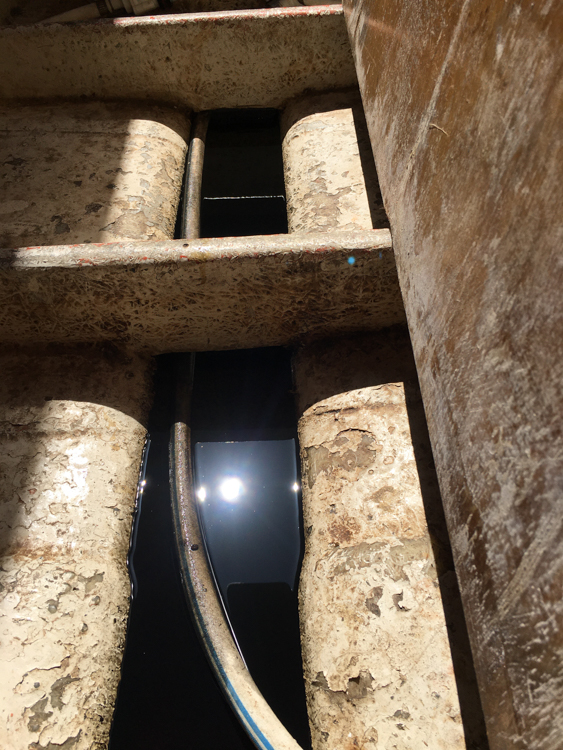
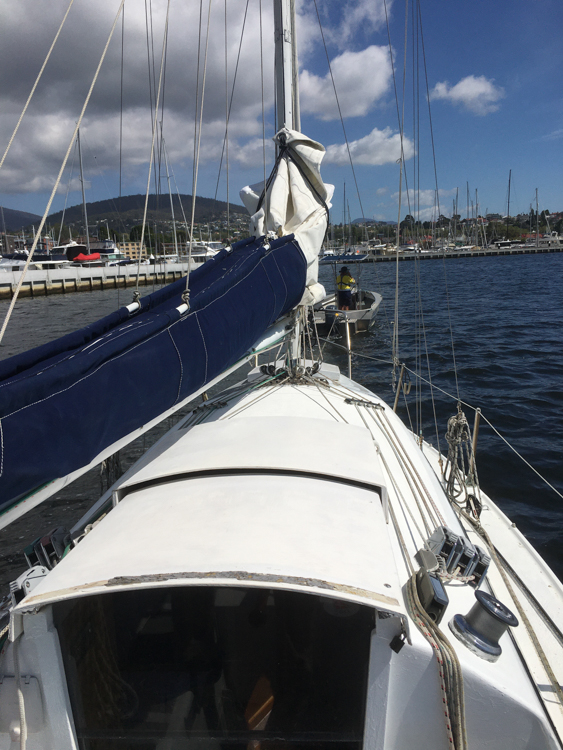
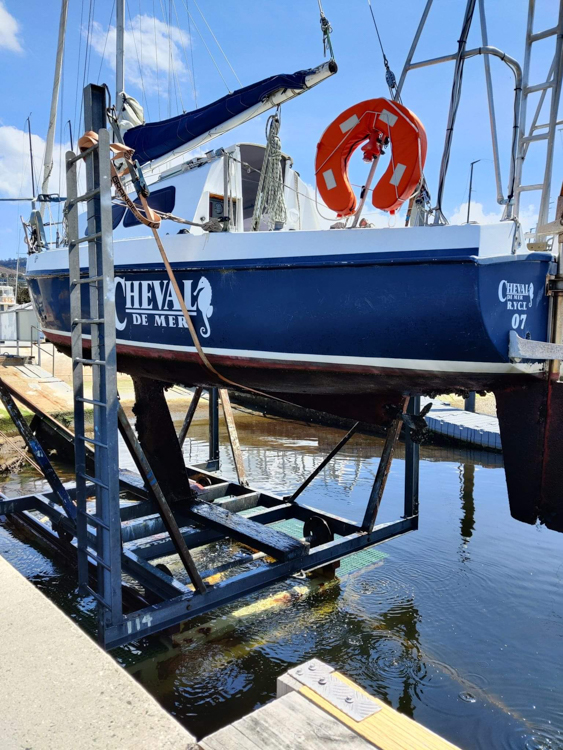
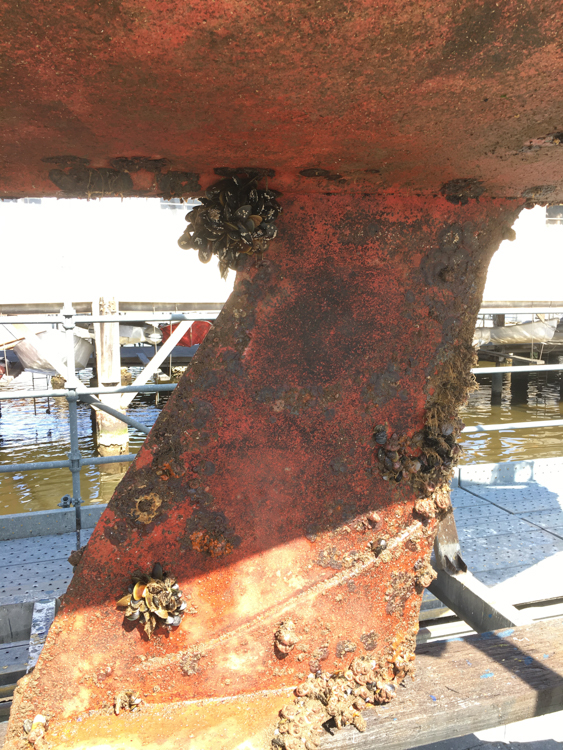
As soon as we were up on the cradle, I pumped the oil out of the bilge and cleaned up the mess. The bilge pump – which had never worked very efficiently – was saturated in oil so I took it home for a clean. The unused piping for the water tanks (I’d removed three large tanks when we set her up for sailing rather than live-aboard) was similarly contaminated, so they went too.
The engine was pristine and clean. There was no sign of any leaks, no trails of oil, nothing. The engine sat on its blocks, and the oil sat beneath, with no indication of how it got out.
The oil filter felt rough to touch underneath, and I wondered if it had developed a pinhole. It was very, very tightly fitted, and there was evidence (in the form of crinkles on the underside) that somebody had cranked it on with a strap wrench. I had to puncture it to get it off, so destroyed any real evidence of pinhole leakage. There were also two metal oil pipes that dipped down into the bilges, where they had likely sat in rainwater for some time while the boat was unattended before we bought it, and these pipes showed a crusting of rust. I dismantled it all and ordered replacement parts.
In the meantime, I got busy with the hull. Once I’d power-washed and chipped off all the shellfish, the fibreglass was down to a previous layer of paint, and the steel keel was practically back to metal. There was a chunk missing from the rudder, where an exposed internal screw head was now visible. I applied two-pack resin where appropriate, and two-pack underwater undercoat wherever I thought I needed it.
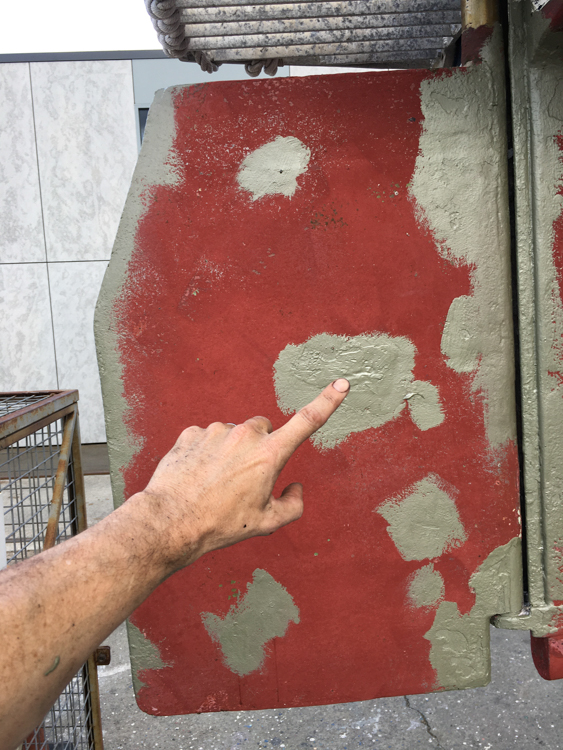
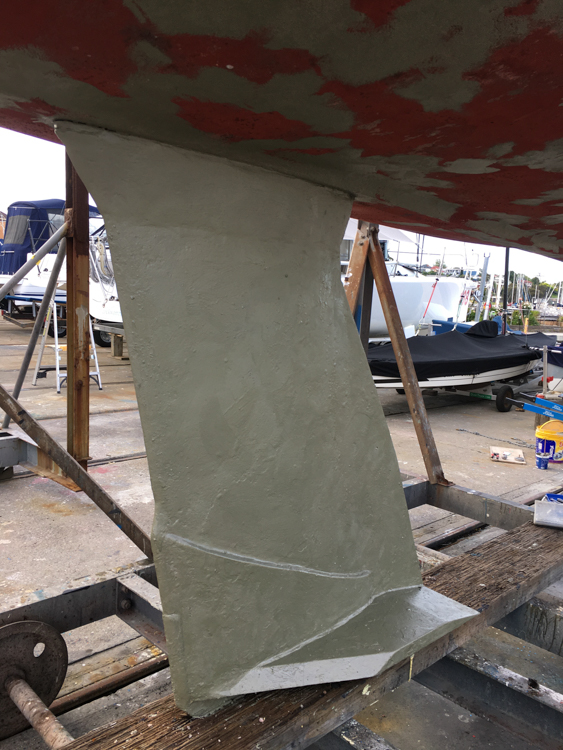
I would have preferred to rub the whole keel down and apply a smooth finish to the anti-foul, but time was short, the cradle was needed for racers rubbing down for the start of the season, and I did also have to work at my day job. A couple of top coats applied with a roller would have to suffice, on this occasion. She looked OK though.
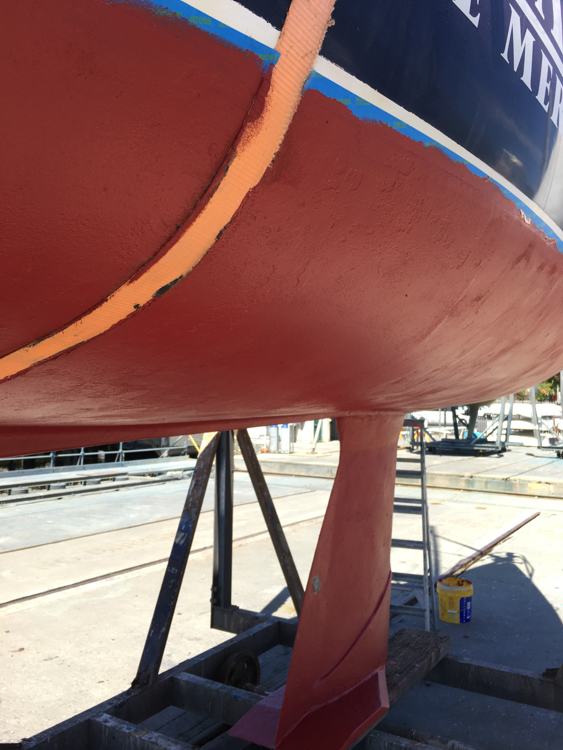
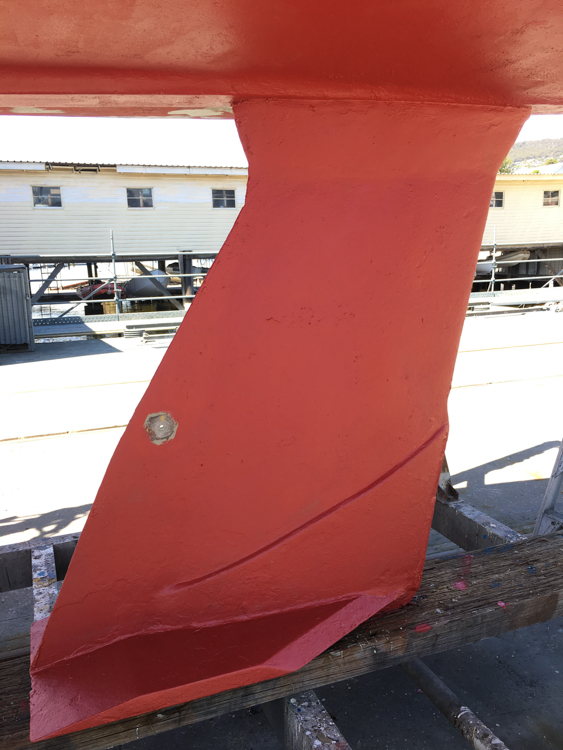
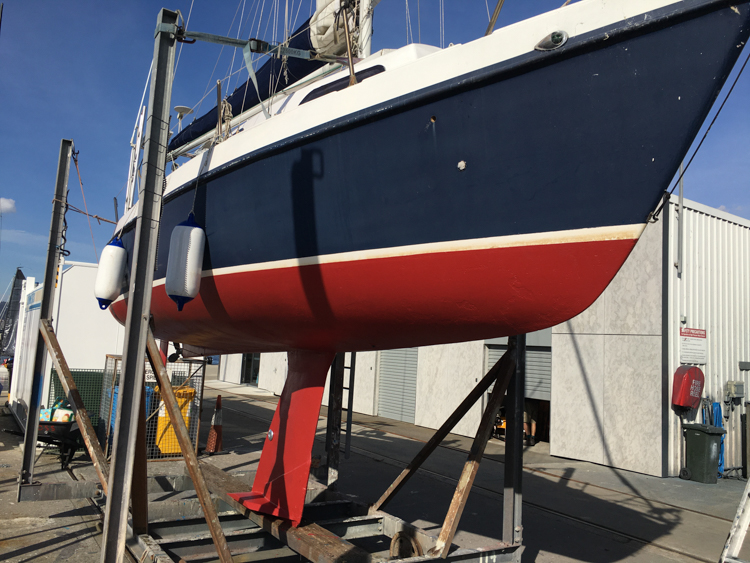
While she was out of the water, I replaced the sacrificial anodes. The keel anodes were ready for replacement, but the one on the prop shaft was in relatively pristine condition, most likely because it hadn’t been fitted properly and only sat loosely on the shaft. To be fair, the previous owner had warned me that he had replaced it in the water and he wasn’t certain that he had tightened it enough, so I was glad to see any anode at all. I had a working theory that if the shaft anode wasn’t functioning fully, enough current might have leaked to burn a pinhole in the thinnest mild steel in the engine, which would be the oil filter.
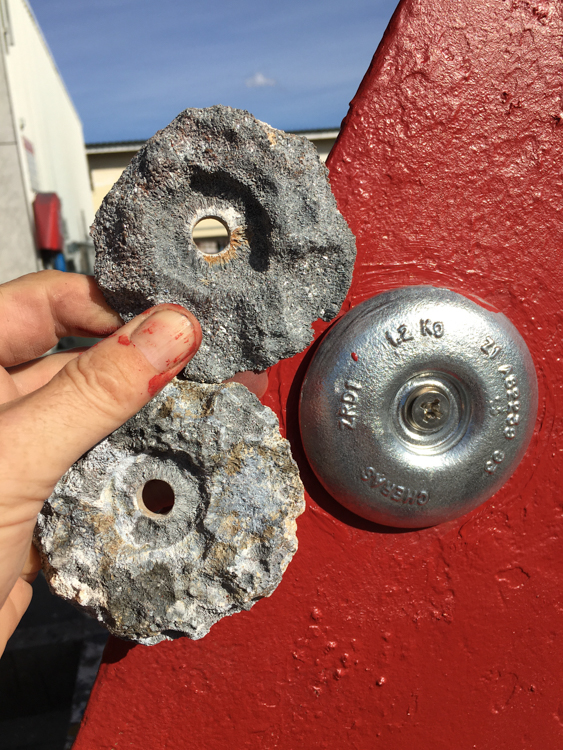
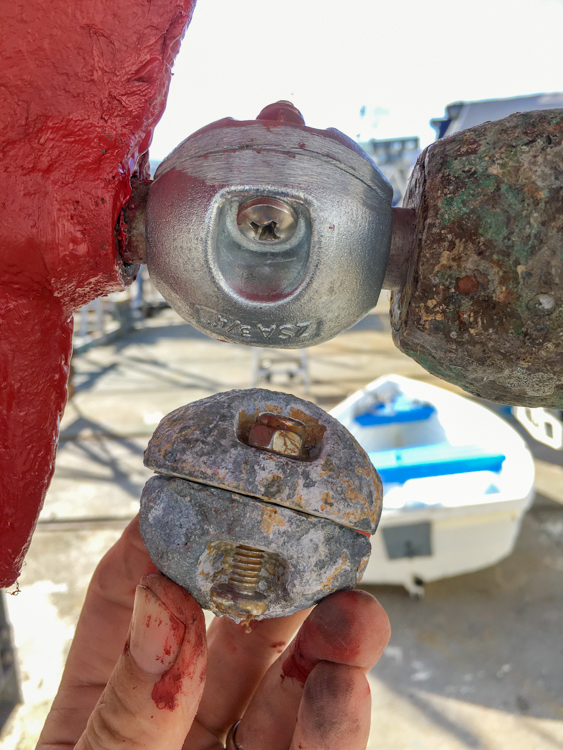
The new set of (very expensive) oil pipes arrived from Yanmar. When the dealer got them out of the box, my first response was, “Gosh, they’re so shiny!”
He gave me a knowing look and said “Aaaah, you’ll have the old ones, then.” Some years back, Yanmar changed the design from steel to copper because of corrosion issues. Not quite a smoking gun, but a useful pointer that I might be on the right track.
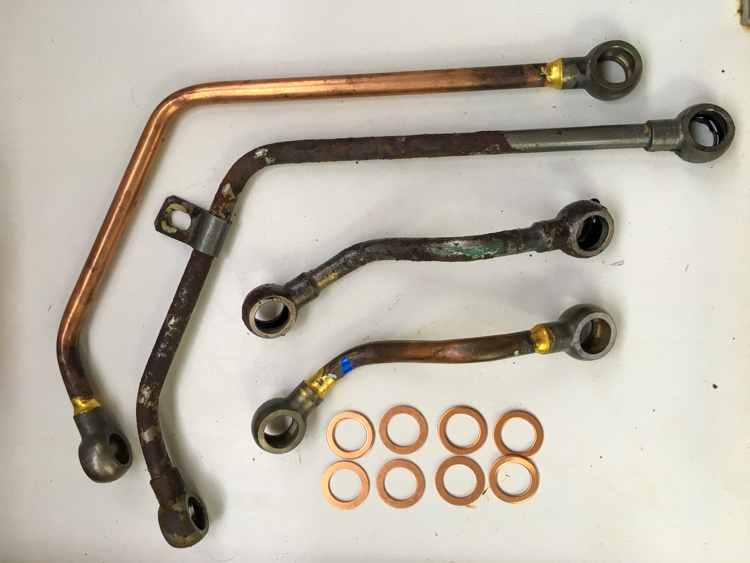
I fitted the pipes, and then briefly fired up the engine. It started, didn’t knock, and the oil stayed in. I only let it run for about 15 seconds because there was no seawater coolant in the intakes. The proof would be when we put her back in the water and warmed the engine up, but at least there weren’t fountains of oil everywhere.
Pausing only to give the bilges a final clean, and then pessimistically lining them with puppy pads, we pushed her back into the sea.
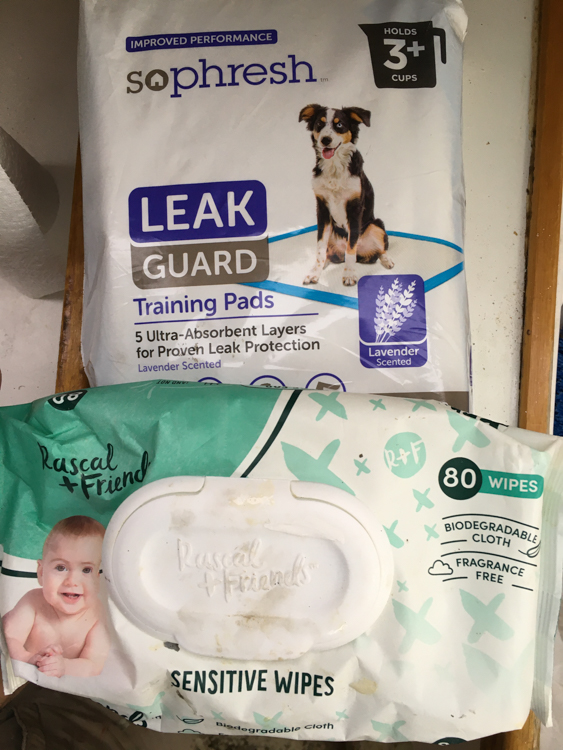
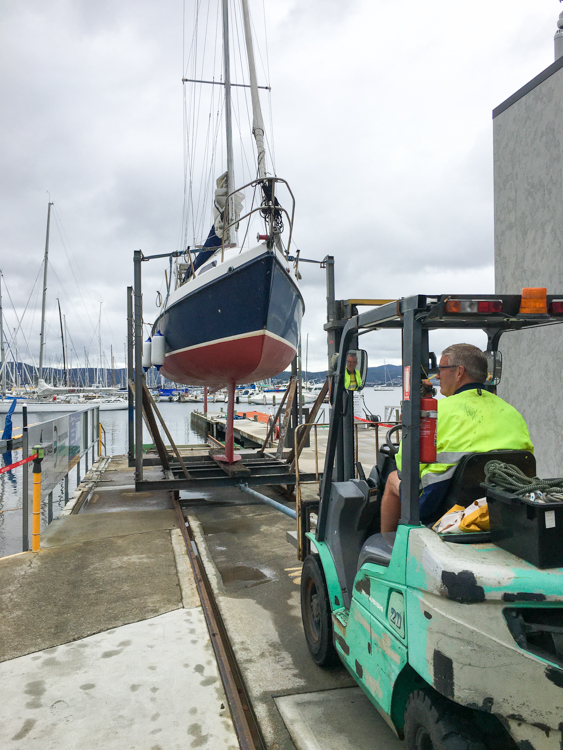
We tied her up to the jetty, and fired up the engine. We stared fixedly at the bilges. Neither oil nor water appeared.
We waited, and listened to the rhythmic pop-pop-pop of the single cylinder. There was no oil in the bilges.
We put her into gear and strained the engine against the mooring ropes. There was no oil in the bilges.
We sat around until she was good and warm, and until the waiting rubberneckers had lost interest and got back to work, and then we quietly backed off the pontoon and opened her up. She had far more power than we were used to, and her bow pointed eagerly out into the river. She ran like silk.